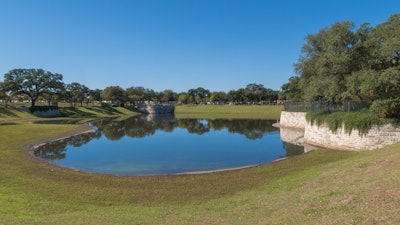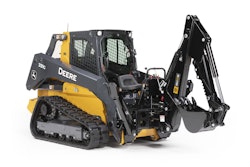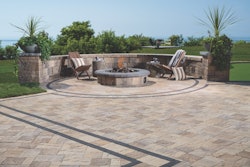
Retention ponds are primarily used to help improve the quality of urban runoff from residential neighborhoods, roads, parking lots, industrial sites, and commercial areas, as well as to reduce peak stormwater runoff rates by providing temporary water storage during heavier storms.
In urbanized areas especially, stormwater runoff serves as a significant source of water pollution. Retention ponds will help provide a treatment basin for pollutant removal, as well as serve as a collection area to keep in larger flows, which will help reduce the peak runoff rates downstream.
When not maintained properly, retention ponds can increase the discharge of pollutants downstream, increase the instability of downstream channels, increase the risk of downstream flooding, and could lead to more problems with aesthetics and other nuisances.
It’s been proven that improper operation and maintenance can lead to retention pond failure, as well as create foul odors, unwanted insects, algae blooms and an untidy area altogether.
If your customers have a retention pond on their landscape, always make sure it is capable of running at full capacity by ensuring it meets the following guidelines.
Perimeter
When checking on the functionality of a retention pond, keep an eye on the dam and surrounding earth to make sure it is in good, working order.
If there’s currently no vegetation around the retention pond, consider adding some in at this time, as vegetation will help reduce the pollutants in the stormwater and help prevent erosion, but remember that whatever is planted there has to be maintained and any overgrowth will need to be reduced.
Installing native plants in the area that will perform well in environments with high moisture can be an excellent first step, and grass is always an ideal choice when looking to add in some greenery near these ponds. Not only will adding in a splash of green add in some physical benefits to the area, but it will also create a more aesthetically-pleasing area to look at.
The best time to try and add in plants around the retention pond is during a dry time of the year, and even though it’s an obvious point to make, be sure that these new plants do not block the access points to the retention pond’s maintenance entrances.
According to the United States Environmental Protection Agency (EPA), these ponds should also include an aquatic bench, which is a shallow shelf that uses wetland plants, around the edging. This, the EPA says, will help cut down on the number of pollutants taken in, while also helping to stabilize the soil around the edges.
If you see any new trees around the area, it’s also a good idea to go ahead and remove them to keep them from causing more problems in the future.
Periodically, you or your customer should walk the perimeter of the retention pond to check for debris or any buildup of silt and remove it. If you see any silt or sediment buildup collecting at the basic forebay, it’s a good idea to go ahead and remove it and keep a regular check on that area.
While you’re performing an inspection of the retention pond, be sure to look over the headwall, exhaust, weir, and other key components to ensure the pond is operating at maximum capacity.
Lastly, remember to inspect the stormwater drains that deliver the water to the retention pond to ensure they are debris free and are in good working order. It’s common for grass clippings, animal waste, and other materials to end up in storm drains, which can cause algae to grow at much faster rates in the pond. This can also increase the needed maintenance to keep the pond working properly.
Turf aeration
Along with regular mowing, you need to ensure the turf around your customer’s retention pond doesn’t become compacted, as this can cause an overflow situation in the pond and soil erosion.
If the soil in the area becomes compacted, it won’t be able to properly absorb water, fertilizers, herbicides, and more, and if conditions are bad enough, meaning there’s an excess of rain and the soil is compacted, it can add much more water than the pond can handle, which will lead to an overflow situation.
By keeping the turf properly aerated, you will allow the soil to receive and absorb water, sunlight, and nutrients more efficiently. Lawns that experience heavy foot traffic throughout the year or have clay soils should be aerated twice annually. If the area around your customer’s retention pond has well-drained soils or has very little compactions, one aeration treatment a year should suffice.
The best time to aerate is when the soil is moist, which is generally about one or two days after it rains. It’s also best to perform aeration services when the turf is actively growing, as this allows it to recover from any damage experienced during the process. Cool-season grasses should be aerated from late March to the end of May, and warm-season grasses should be aerated in late May to late August.










